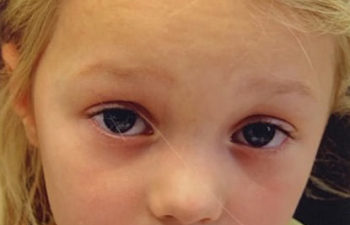
Moles, more uncommonly known by their medical term “nevi”, are odd skin growths that can trigger various concerns. People can be born with moles or develop moles throughout their lifetime. Moles are not at all uncommon, and the vast majority of them are benign and completely harmless. Some even consider strategically placed moles a “beauty mark.” There are several popular celebrities that are known for a mole in an obvious location.
Basic Mole Health
Your doctor can examine any moles that cause you concern and recommend if they should be checked by a specialist. At the Vascular Birthmark Institute, we can determine of your child’s mole is a cause for concern. We also offer treatment options for removing problematic nevi that pose a health or aesthetic concern.
You should take time periodically to examine any moles on your child, using the ABCDE Rule as a guideline. If any of the factors in this rule are present, you may want to book a consultation with a specialist at the Vascular Birthmark Institute in New York.
- A for Asymmetry – Normal moles, or nevi, are symmetrical. A good way to determine this is to draw an imaginary line through the center – you should see two symmetrical or equal halves.
- B for Border – Harmless moles are typically round, not irregularly shaped.
- C for Color – Normal moles are usually a single color, dark or light. A mole with more than one color, or those that change color, should be examined.
- D for Diameter – Smaller moles are typically harmless. If a mole is larger than a pencil eraser (1/4 inch), it should be examined.
- E for Elevation – Elevated, or raised, moles that have an uneven surface should be checked further by a specialist.
Moles can change over time and still be harmless. Any changes that seem suspicious should be examined by a specialist who can advise you further.
Problematic Moles
Nevi, or moles, that pose a significant risk or problem are matters of special concern that warrant a quick examination by a specialist. These moles are rarer, but they do appear and pose some health risks and/or aesthetic concerns.
- Bleeding moles – Any raised mole can catch on clothing, an article of jewelry or even a fingernail and bleed. A mole that bleeds on occasion without any visible or noticeable cause should be checked. Moles that turn into sores that bleed should also be checked as soon as possible.
- Large moles – Larger sized moles can present problems with movement if placed in areas where the skin demands more stretching or flexibility. This can be at a joint like the underarm or knee, or even too close to an eyelid. Even if the mole is not a health risk, it poses problems for mobility or aesthetics and you should consider removal.
- Groups or plentiful moles – Children with 50 or more moles, either grouped or spread across the body, should be checked. A large number of moles on the body can be a sign of melanoma.
The Vascular Birthmark Institute in New York can offer advice, diagnosis and treatment if your child has a mole that seems questionable or presents problems. Contact us today to schedule a consultation and examination.
Posted on behalf of
Grand Park Building, 110 East 40 Street, Suite 501
New York, NY 10016
Phone: (212) 434-4050
FAX: (212) 434-4059
Email: info@vbiny.org
Monday-Friday: 8:30am-5pm